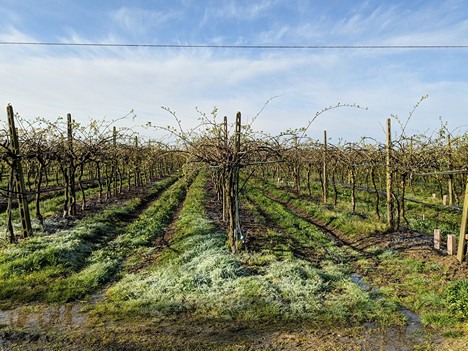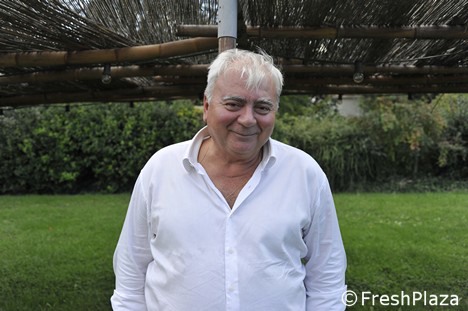"After visiting all the main fruit-growing areas in Italy, I can say that in 2021 there will be even fewer kiwis in Italy than in 2020," said Pietro Cimatti, fruit-growing expert.
The situation in Emilia-Romagna is slightly better than last year, when the frost had impacted very heavily. This year the damage was patchy. "However, in other growing areas, such as Veneto and Piedmont, the quantities have more than halved. In some areas the temperature has dropped to 7-8°C below zero, so there is little left to save."
 Frost damage to a kiwi plantation. (Photo by Condifesa Ravenna)
Frost damage to a kiwi plantation. (Photo by Condifesa Ravenna)
Cimatti has his own philosophy on preventing frost damage. "Nutrition is the key. I've been dealing with it for 45 years and have gained a certain amount of experience. There are kiwi plants that, after being provided with a certain amount of fertilizer, have withstood temperatures of 3-4°C below zero. In a farm in Cotignola (Ravenna), an area that I would define the cold node of Romagna, the damage to buds has not exceeded 10%, thus ensuring a full production. This is because of a perfectly designed anti-frost system and a fertilization plan precisely conceived to anticipate late frosts. Almost the entire crop is thus guaranteed. Not to mention that the temperature had dropped more than 6°C below zero. In a year like this, it means that the GSP will be very high". "
 Pietro Cimatti
Pietro Cimatti
Cimatti remarked that there was a solar minimum this year, which has not occurred since 1630. "From a weather point of view, this means that we will face greater instability, with extreme events during the next 10-15 years and, probably, a subsequent colder phase. Since in 1630, after the solar minimum, we had a minor Ice Age."
Cimatti claims that the climate is made up of at least 73 factors, of which carbon dioxide is one. "But nowadays few take into account the other 72 parameters. We are influenced by only one factor, but the climate cannot be pigeonholed."
For more information:
Pietro Cimatti
cimatti.pietro@gmail.com
